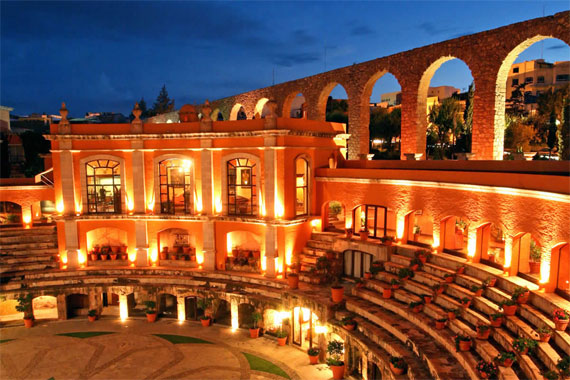
QUINTA REAL ZACATECAS, MEXICO
You’ll be hard-pressed to find a more achitectually impressive hotel than this. Built into the grandstand of the restored San Pedro Bullfighting ring in central Mexico, Quinta Real Zacatecas is so seamlessly built into the original structure that you wouldn’t be surprised if a matador with a red cape swooshed by. Rooms overlook the central former bullring, which witnessed its last bullfight in 1975. It dates back to the 19th century and is now converted into a cobblestoned courtyard and dotted with overflowing plant pots.
Inside the suites, decor is inspired by the colonial architecture of the nearby city of Zacatecas. One of Mexico’s hightest cities (at 8,000 feet), it boasts beautifully preserved pink stone buildings decorated with delicate wrought-iron balconies. Rooms have traditional armoires, antiques and original works of Mexican art, giving a feeling of grandeur, You will love the pillow menu for picking the ultimate cushion for the perfect night’s sleep. On site is the La Plaza restaurant and Located under the hotel, in the original area where the bulls were kept before released into the ring, is the Botarel Bar, inside still has its original arched walkways, exposed brick walls and ceilings all lit by candlelight.
SPITBANK FORT
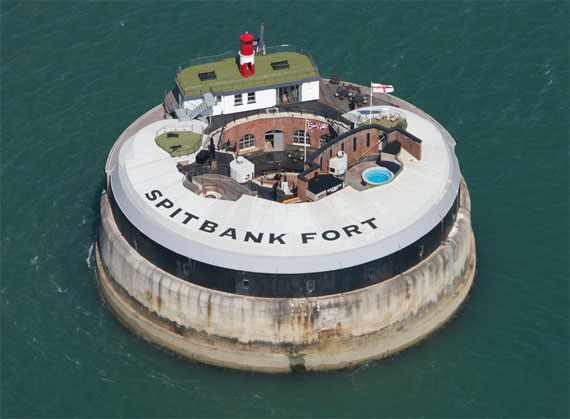
Spitbank is another monumental and historical structure that has been transform from its original purpose into a five-star residence. Spitbank an ominous concrete structure off the South Sea, is one four Napoleonic fortresses in the Solent known as Palmerston’s Follies. The fort was decommissioned in the 1960s and was once the hangout for ravers.
With guidance from the English Heritage, the fort has underwent a multimillion-pound renovation that has created an exclusive retreat that can sleep 18 and offer function space for 60 people. Although outside shows many of its original features, from the wrought-iron hooks that jut from stone walls to the jaunty red-and-white striped lighthouse perched above the crow’s nest, inside the hallmark of a five-star residence.
The original stone and iron layout has been brought up to date with natural wood features, stylish antiques and chi-chi furnishings. Spitbank has eight beautifully decorated suites, each with the names of famous naval officers. An iron spiral staircase take you up to the sun decks where a large hot tub, sauna and a firepit give vantage points of the Isle of Wight and Portsmouth. The lower deck, offers a chilled out area with a wine cellar, poker room and a warren of snugs, nooks and hidey-holes filled with books, leather chairs and patriotic soft furnishings.
KRUISHERENHOTEL, MAASTRICHT, THE NETHERLANDS
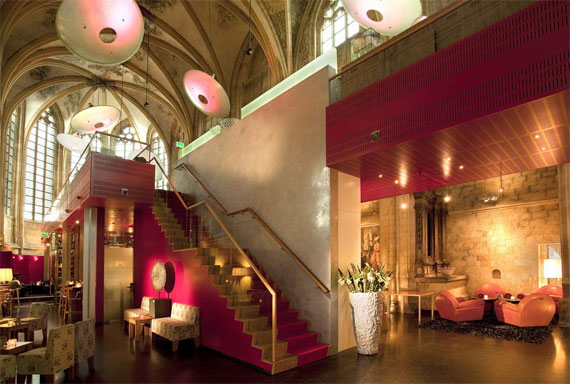
Along the Maastricht cobbled streets and Nestled among the classic pavement cafes, cool bars and breathtaking architecture is the Kruisherenhotel, a converted 15th century monastery and gothic church renovated by Dutch designer Henk Vos. In the church, he created a coffee bar, library, boutique and reception and transformed the monastery into 60 boutique bedrooms, with Philippe Starch furniture.
Each room has it unique style but modernise with bright murals on the wall, flatscreen TV hanging against its crumbling original stone, giving you that authentic feel. A mezzanine has been added to provide somewhere to eat; from there you can see across Maastricht through the church’s original chancel windows. At night its of home of the Kruisheren restaurant, which has an ‘above ground’ wine cellar.
THE LIGHTHOUSE GRABENI, DUBROVNIK, CROATIA
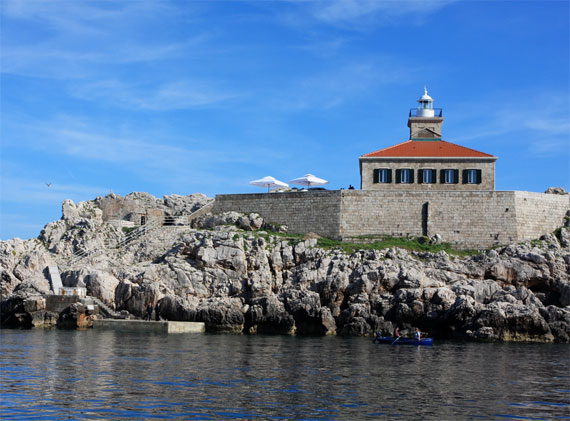
Ever dreamed of spending a night in a lighthouse? The crashing waves, the scent of the sea, the isolation – it’s as romantic as it gets. Set on it own rocky island, just off the Adriatic coast, is the charming lighthouse Grebeni. It was built in 1870 to guide sailors to shore, but is now a three bedroom villa and its light still flashes three times every 10 seconds. Inside the decor is simple, with wash-walls, blue-painted furniture and windows.
Access to the Grabeni is via the Dubrovnik Palace Hotel on the mainland; after checking guest are whisked off by speedboat to the villa, which adjoins the working lighthouse and sleeping up to seven people. For anyone seeking a short break with a little solace, this is the ideal spot. With your own contemporary kitchen fully stocked with fresh food, sun terraces with endless views of the crystal-blue ocean and breakfast delivered by boat each morning – me-time is guaranteed. If you want to wonder around you can call for a speedboat to take you to the nearby boutiques of Dubrovnik’s old town and come back to the Grebeni’s pop-up beach spa.
WILSON ISLAND, QUEENSLAND, AUSTRALIA
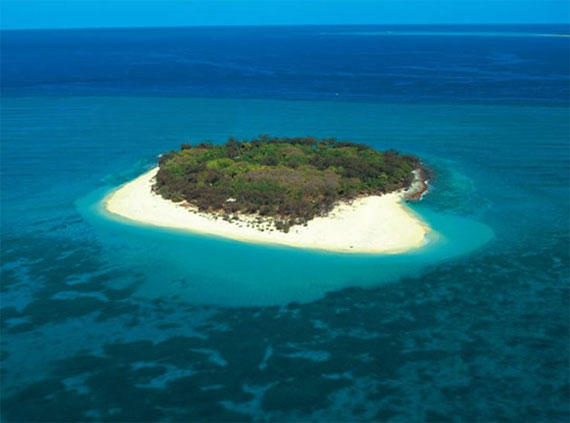
Fancy having a whole island to yourself? Then gather a group of friends and head to the remote coral bay of Wilson Island in Australia’s Great Barrier Reef. Designed by renowned Australian architects, Pike Withers, the eco resort is 70 kilometres from the coast of Queensland and made up of six luxury tents, with a maximum of 12 guests at any one time, allowed on the island; this is to preserve its pristine natural setting.
Tents are furnished with wooden floors, kingsize beds and sun decks with double hammocks and views over the ocean. The Longhouse is the main dining area featuring an open kitchen when evening draw in, laid-back dinners of freshly caught seafood are served at the communal table by the chef. With no phone connections or TV, it offers the perfect ‘lost’ experience.
SEXTANTIO LE GROTTE DELLA CIVITA, MATERA, ITALY
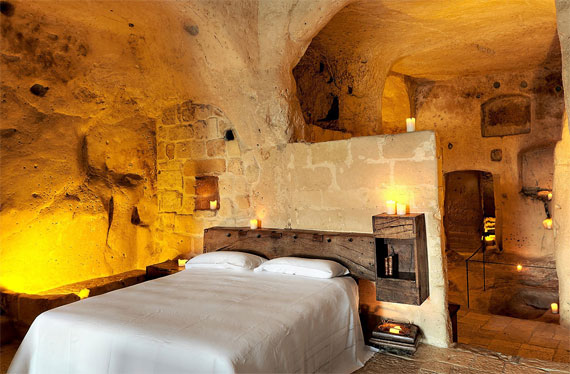
Built into the ancient caves (known as sassi) in the Matera are of Basilicata in southern Italy, this unique hotel of the work of Philanthropist Daniele Kihlgren. He set out to offer a sassi experience, restoring the caves using traditional materials. Looking at the spectacular results it’s no wonder it took him 10 years to complete.
The Sextantio offers eighteen spacious rooms with the caves; each has a view overlooking the dramatic vistas of the Alta Murgia National Park. Each rooms is lit by large candles at night and scented with essential oils; the antique beds are covered in bed linens made from local source; cast-iron baths and recycled furniture made by local artisans. The hotel provides a breakfast (with freshly baked breads); with the elegant The Tasting Room restaurant near the hotel offers fuss-free delicious meals.
Spend the Weekend Suspended in Crane 29
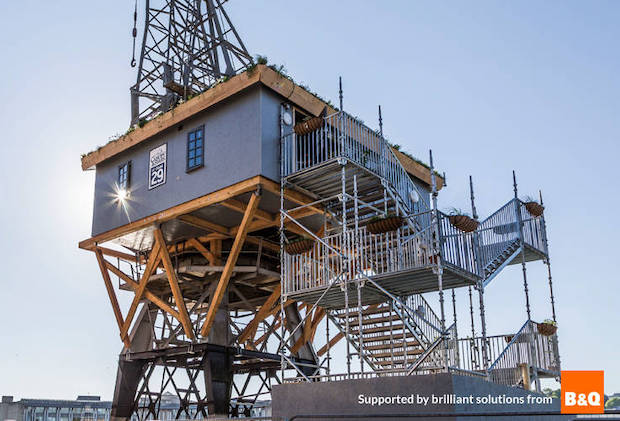
This next short break accommodation is not for those who are afraid of heights. Crane 29 on Bristol’s harbourside is the world’s first tree house hotel up a crane. The tree house was built up one of the city’s only surviving iconic 1950s dockside cranes. The living area is the refashioned crane’s engine room and the result of three years of planning. It is the brain child of Canopy & Stars, a glamping specialist in partnership with DIY retailer B&Q.
The compact construction was design to be a little pocket of nature eight metres off the ground. From the entrance you are surrounded by greenery throughout, super chic indoor ferns spring from wall-mounted planters and hanging baskets, with natural wood flooring. There’s an iPad pre-programmed with music. There are also playlists of birdsong and other natural sounds, if you are up for the fully immersive treehouse experience.
Inside is a kitchen, bathroom with a watering-can shower, a bedroom with a double bed and small living area with a hummock for two. From the hummock via it massive windows you can sit overlooking the harbour, and watch the sunsets behind the grand Georgian terraces of the city’s Clifton district.